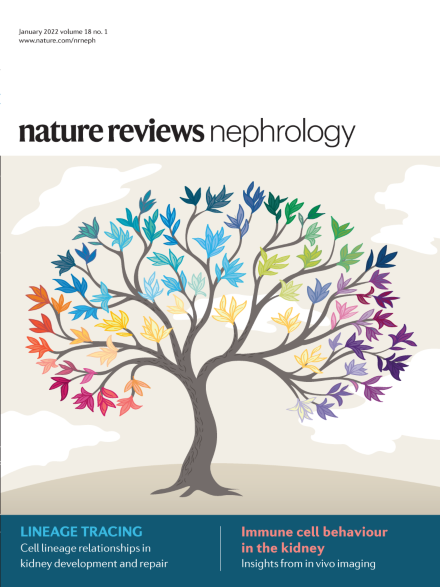空间代谢组学与多组学的整合,为肾脏疾病的精准医学带来突破。
IF 39.8
1区 医学
Q1 UROLOGY & NEPHROLOGY
引用次数: 0
摘要
精密医学现在是一个可行的前景,肾病学家有许多治疗方案可用于各种形式的肾脏疾病。然而,这一战略的实施将需要高维诊断方法,以确定将对干预作出反应的患者,并监测与潜在疾病进程相关的行动机制。随着空间组学的出现,对生物样本进行全面彻底的分子分析成为可能。特别是,肾活检样本的空间代谢组学分析可以在促进肾脏疾病的精准医学方面发挥重要作用。空间代谢组学可用于监测特定解剖区室(如肾小球、小管、血管和间质空间)中基因和蛋白质功能结果的变化。空间代谢组学研究已经在糖尿病肾病的间质纤维化和动脉硬化区域发现了腺嘌呤,为糖尿病患者肾小球中n -聚糖的调节提供了新的见解,并实现了肾癌亚型的新的代谢组学分类。利用计算信息学平台将基因组学、转录组学、蛋白质组学和表观基因组学与代谢组学相结合,将进一步提升空间代谢组学的临床应用价值。本文章由计算机程序翻译,如有差异,请以英文原文为准。
Spatial metabolomics and multiomics integration for breakthroughs in precision medicine for kidney disease.
Precision medicine is now a feasible prospect for nephrologists as numerous therapeutic options are available for various forms of kidney disease. However, implementation of this strategy will require high-dimensional diagnostic approaches to identify patients who will respond to an intervention and monitor mechanisms of action relevant to the underlying disease process. With the advent of spatial omics, comprehensive and thorough molecular analysis of biological samples is now possible. In particular, spatial metabolomics analysis of kidney biopsy samples could have an important role in facilitating precision medicine for kidney diseases. Spatial metabolomics can be used to monitor changes in the functional outcomes of genes and proteins in specific anatomical compartments such as the glomeruli, tubules, blood vessels and interstitial spaces. Spatial metabolomics studies have identified adenine in regions of interstitial fibrosis and arteriosclerosis in diabetic kidney disease, provided new insights into the regulation of N-glycans in glomeruli from patients with diabetes, and enabled a new metabolomic classification of kidney cancer subtypes. Use of computational informatic platforms to integrate genomics, transcriptomics, proteomics and epigenomics with metabolomics will further enhance the value of spatial metabolomics for clinical applications.
求助全文
通过发布文献求助,成功后即可免费获取论文全文。
去求助
来源期刊

Nature Reviews Nephrology
医学-泌尿学与肾脏学
CiteScore
39.00
自引率
1.20%
发文量
127
审稿时长
6-12 weeks
期刊介绍:
Nature Reviews Nephrology aims to be the premier source of reviews and commentaries for the scientific communities it serves.
It strives to publish authoritative, accessible articles.
Articles are enhanced with clearly understandable figures, tables, and other display items.
Nature Reviews Nephrology publishes Research Highlights, News & Views, Comments, Reviews, Perspectives, and Consensus Statements.
The content is relevant to nephrologists and basic science researchers.
The broad scope of the journal ensures that the work reaches the widest possible audience.
 求助内容:
求助内容: 应助结果提醒方式:
应助结果提醒方式:


